Main menu
Common skin conditions

NEWS
Join DermNet PRO
Read more
Quick links
Introduction Demographics Clinical features Microscopic features Treatment
Stretch marks are fine lines on the body that occur from tissue under your skin tearing from rapid growth or over-stretching. It is a common condition that does not cause any significant medical problems but can be of cosmetic concern for some people. Other names for stretch marks are:
See also elastotic striae (linear focal elastosis).
Stretch marks are very common, affecting 70% of adolescent girls and 40% of boys. They occur in certain areas of the body where the skin is subjected to continuous and progressive stretching. These include:
Stretch marks can also occur from prolonged use of oral or topical corticosteroids and from anabolic steroids. They are also a feature of the disease Cushing syndrome, where increased adrenal cortical activity excessive. They are seen more often in people with Marfan syndrome.
An early sign of stretch marks developing is when an area of skin becomes flattened and thin with a pink colour. This may also occasionally be itchy. Soon reddish or purplish slightly swollen lines develop perpendicular to the direction of skin tension (striae rubrae). Over time, these lighten to become whitish or flesh-coloured and much less conspicuous (striae albae). Stretch marks are usually several centimetres long and 1–10 mm wide. Those caused by corticosteroid use or Cushing syndrome are often larger and wider and may involve other regions, including the face.
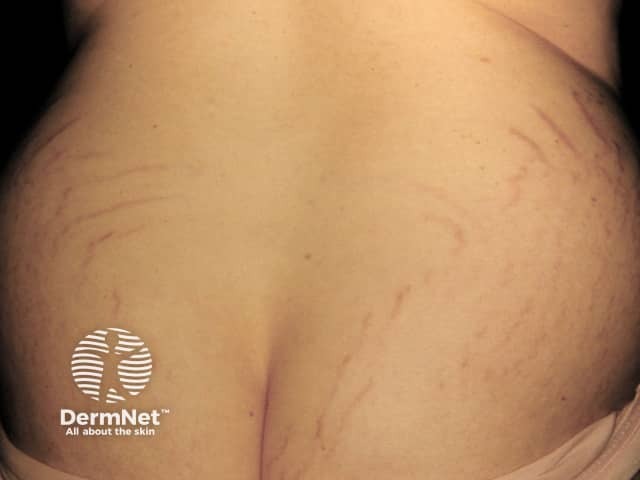
Stretch marks (striae)
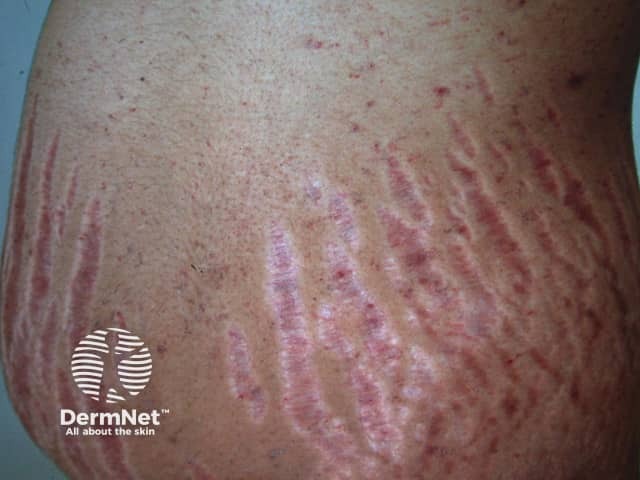
Stretch marks (striae)
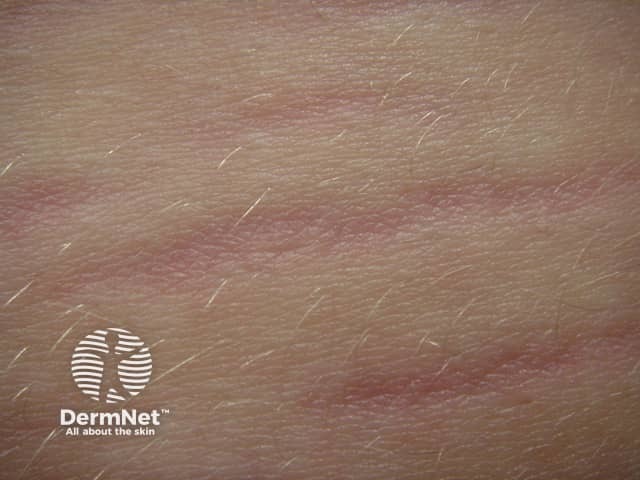
Stretch marks (striae)
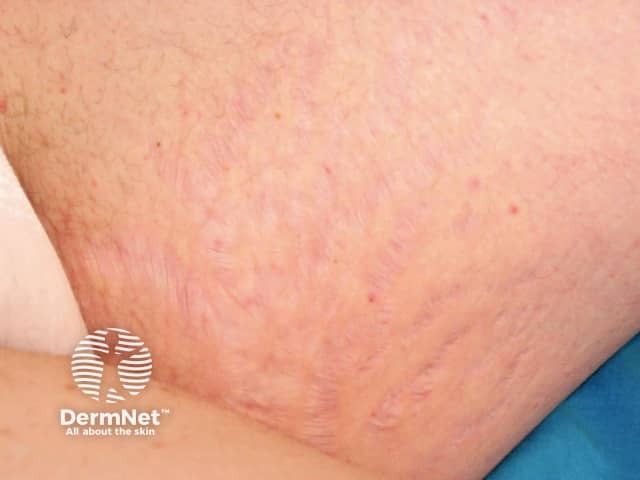
Stretch marks (striae)

Stretch marks (striae)
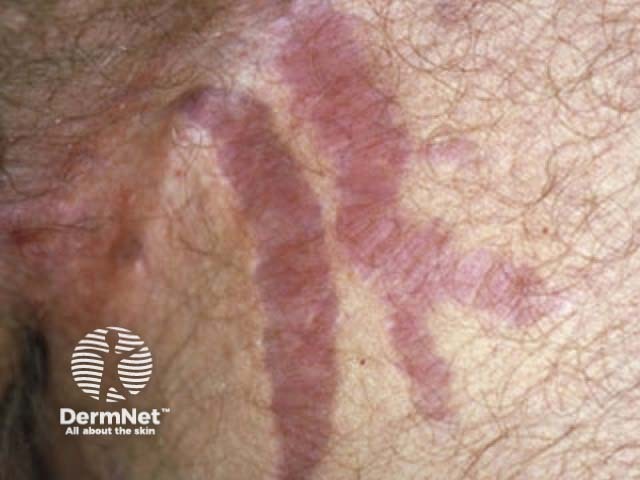
Stretch marks (striae)
The histopathological features of striae rubrae on skin biopsy include:
Striae albae resemble scar tissue:
Striae can be confused with linear focal elastosis, which has increased elastic fibres on histopathology.
Stretch marks usually are only a cosmetic problem, but rarely, if extensive they may ulcerate or tear easily in an accident. Stretch marks occurring in adolescents become less visible over time and generally require no treatment. In other cases, if stretch marks are a cause of concern then the following treatments, or others, can be tried, but have not been proven to be effective: